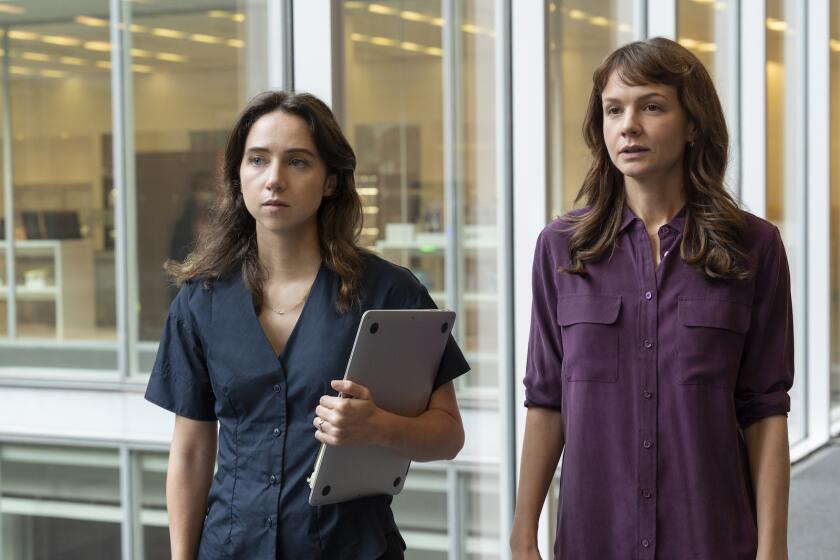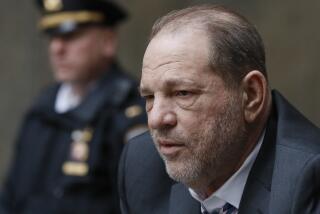How Weinstein’s survivors came together, again, to tell their stories in ‘She Said’
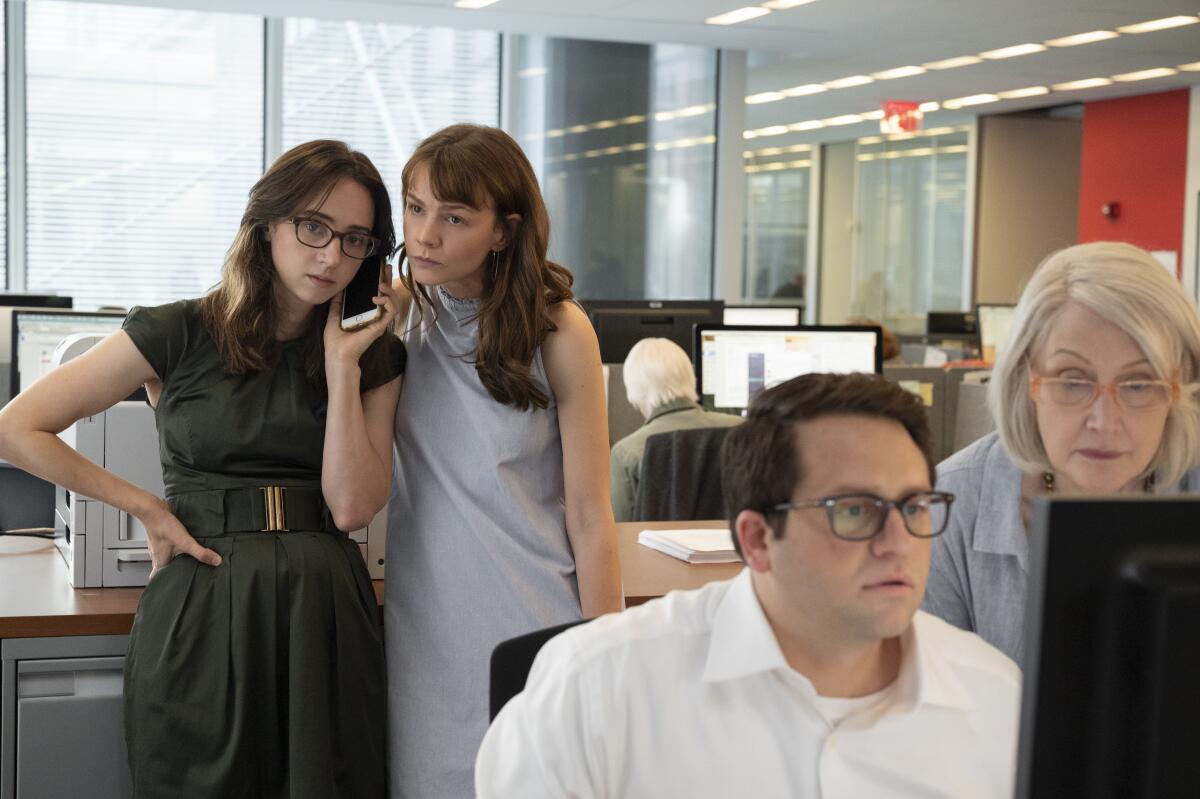
When director Maria Schrader and screenwriter Rebecca Lenkiewicz began developing “She Said” as a film, they quickly established a few ground rules.
Their dramatization of the New York Times investigation that toppled Hollywood producer Harvey Weinstein and triggered a global reckoning would not include visual depictions of sexual assault or harassment. Instead, the survivors — some even playing themselves — would recall the incidents using their own words.
There would be no female nudity and no brutalized victims at the crime scene. Survivors would be fully rounded humans, defined more by their bravery and resilience than their encounters with an abusive Hollywood power player.
And, in arguably the most radical departure — given the outsize influence he wielded in the business and the industry’s enduring fascination with violent predators — Weinstein himself would exist at the edges of the story. In fact, the audience would never even see his face.
If you were in a newsroom during #MeToo, you know it wasn’t a witch hunt; it was like watching a mile-high dam break.
“The film is not about Weinstein, it’s about a collective of women who break down decades of silence through their bravery,” said Lenkiewicz, who began adapting the investigation by Jodi Kantor and Megan Twohey even before it was published as a book in 2019. “We all felt that Weinstein had taken up enough oxygen for several lifetimes and I couldn’t envisage writing a script with him in it.”
A propulsive procedural that, like the Oscar-winning “Spotlight,” shows the persistence, institutional support and good, old-fashioned shoe-leather reporting it takes to uncover long-buried truths, “She Said” is a celebration of the determined journalists who managed to crack the case and, especially, the unsung women who came forward to share their stories after their Hollywood careers were sidelined.
Tellingly, the film opens from the perspective of Laura Madden (played in flashback by Lola Petticrew and in the present day by Jennifer Ehle) as she stumbles onto a seemingly magical film set in Ireland. But the spell is quickly broken: Seconds later, we see her running, in a panic, down city streets. Later, we learn how Weinstein lured her to a hotel room, asked her for a massage and pressured her into unwanted sexual contact — a decisive pattern that would emerge in the accounts of many survivors.
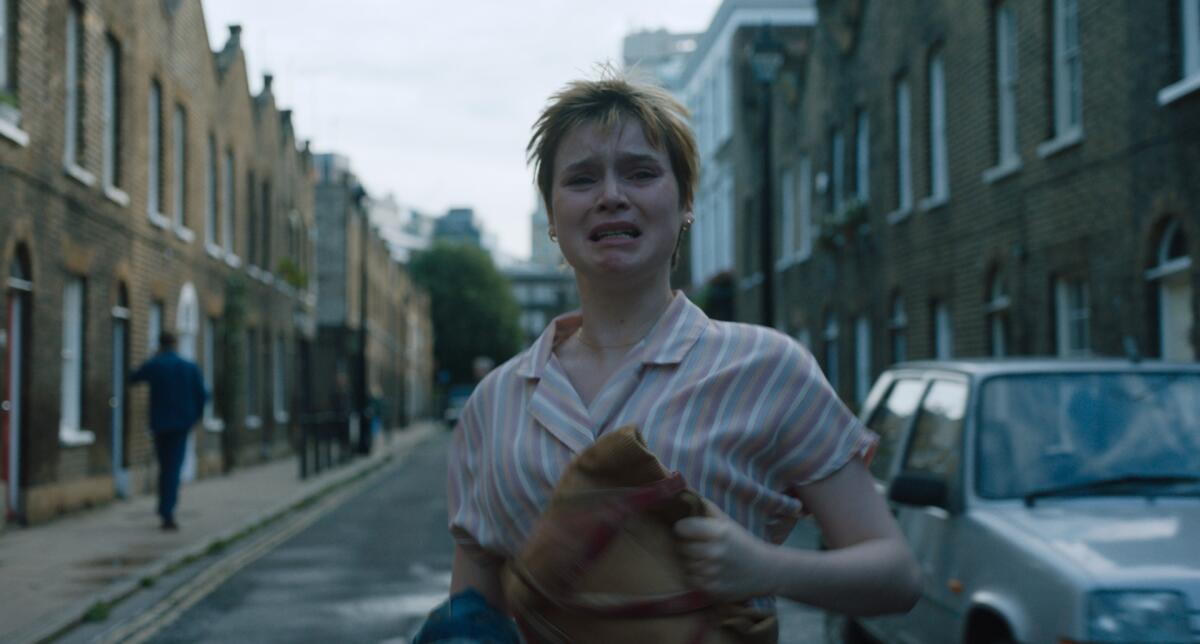
Along with Madden, two other women become crucial sources in the investigation — and characters in the film. Zelda Perkins (Samantha Morton) and Rowena Chiu (Angela Yeoh) were both assistants in Miramax’s London offices in the late ‘90s when Chiu told Perkins that Weinstein had attempted to rape her at the Venice Film Festival. Perkins reported Weinstein’s alleged behavior but was, along with Chiu, pushed to sign a comprehensive nondisclosure agreement. Both women ultimately left the film business, as did Madden.
“Famous actresses got much of the attention during the #MeToo explosion, but these little-known women were in many ways the heart of what happened,” Kantor wrote in an email. “To me, this film returns them to Hollywood with a dignity and respect they were never given the first time around.”
Kantor and Twohey facilitated introductions to these sources, and as she began writing the script, Lenkiewicz spent time with Perkins, Madden and Chiu. “I wanted them to feel safe in the space of the film: [to know] that we weren’t just hijacking their lives, that we absolutely respected them and admired them for being part of the project,” she said.
“The attacks are described because I think it’s important for people to know the trauma and the authentic voice of the survivors. Just the retelling is enough,” said Lenkiewicz. “I’m very conscious of the male gaze, how it’s been there for decades, and it’s really liberating to turn that around and just have women center stage — being active and working together and not having to take their clothes off.”
Whenever they could, the filmmakers incorporated real survivors and their accounts, giving “She Said” an almost documentary feel at times. We hear the actual audio recording of Weinstein harassing model Ambra Battilana Gutierrez and acknowledging a prior assault because, Lenkiewicz said, “It was very important to understand how Weinstein worked — that it was very hard to negotiate or navigate against the force of his will.”
But the tape is accompanied by shots of empty hotel corridors, not actors doing a re-creation.
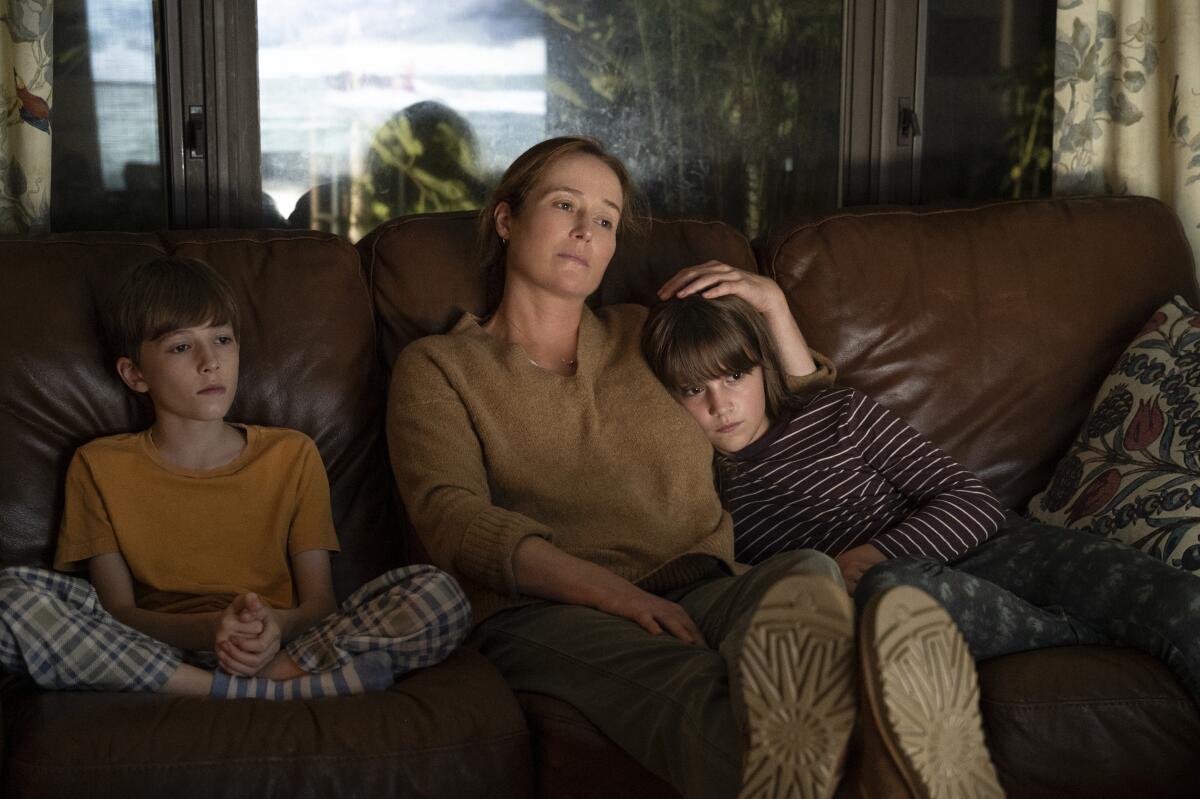
“[As] you listen to something which is very physical, you almost have a fantasy of these two bodies as one tries to escape, but we chose the opposite: to have a very steady camera moving through the corridors,” Schrader said. “[Cinematographer] Natasha [Braier] and I always tried to stay away from illustration.”
In the film’s final act, as the New York Times prepares to publish the investigation, we hear Weinstein’s real voice on the phone with Kantor, Twohey and their editors. (Seen fleetingly from behind, actor Mike Houston also makes a brief appearance as the producer in a scene in a Times conference room.)
Actors Gwyneth Paltrow and Judith Godrèche, both of whom eventually went on the record to accuse Weinstein of harassment, also lend their voices to “She Said.” Former Weinstein Company employee Lauren O’Connor reads the scathing memo she wrote in 2015, which became a key piece of evidence in Kantor and Twohey’s initial investigation.
“Everyone was invited to be involved,” Lenkiewicz said. “There was also a conscious casting of survivors in different roles.”
Zoe Kazan and Carey Mulligan star in ‘She Said,’ a methodical, powerful recounting of the Weinstein investigation by two New York Times journalists.
Ashley Judd, the most high-profile celebrity to go on the record in Twohey and Kantor’s initial report, appears as herself, recalling how Weinstein lured her to a suite at the Peninsula Hotel 30 years ago and badgered her to give him a massage or watch him shower. (Her story is accompanied by images of a luxurious hotel suite.)
Judd reviewed the script and gave feedback about the wording of her account, Schrader said: “Ashley was in from the first moment I met her. She’s an incredible, impressive person.” The moment Judd decides, after much discussion, to go on the record with her allegations marks the emotional climax of the film.
Like Twohey and Kantor, the filmmakers had to convince the survivors they could be entrusted with telling their stories.
“We tried to treat the accounts and the scenes with survivors with as much care as Jodi and Megan did” in their reporting, said Schrader, whose series “Unorthodox” explored related themes of female agency and sexual trauma. An actor for many years before she became a director, Schrader recalled how the reports about Weinstein in 2017 made her reconsider “little incidents and then not-so-little incidents” she experienced in the business and begrudgingly accepted.
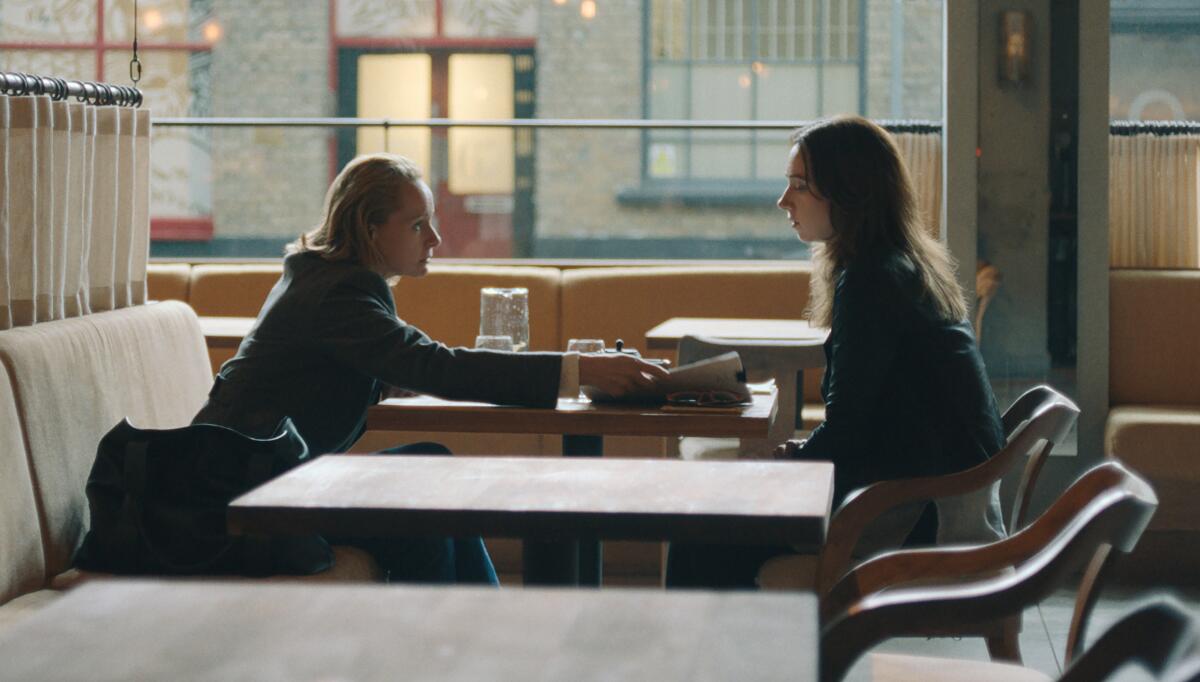
“I was definitely one of these people who tried to not be affected, or tried to meet it with humor,” she said.
Hollywood is notorious for taking generous liberties with anything “based on a true story” — rearranging timelines, changing characters’ names and inventing conversations out of whole cloth. The sensitive nature of the material in “She Said” demanded a more cautious approach.
Lenkiewicz estimates that about 95% of the story is accurate, though she took “tiny liberties” for the sake of dramatic impact. After all, “hearing a phone call is more exciting than reading an email,” she said. “It’s the truth, just a bit more animated.”
Twohey and Kantor talked to Carey Mulligan and Zoe Kazan about their strategies for interviewing survivors.
Mulligan wanted to know “not just what words are said but in what tone and with what body language. She also wanted to know how we contain our emotions as we report into such upsetting discoveries,” said Twohey, who shared some recordings with the actor. “It was really moving to see all that research expressed on screen.”
“Those kinds of interviews are hard to get right in life, let alone on film. You’ve got to be empathetic but also assess the strength of the account. You’re also trying to earn trust in the investigation,” said Kantor. “In those interview scenes, [Kazan]’s so restrained, giving the spotlight to the woman telling the story. But because she’s such an expressive actor, you can see the emotions glinting beneath her professional demeanor.”
To enhance the film’s female perspective, Lenkiewicz incorporated aspects of Twohey and Kantor’s personal lives that were largely left out of the book. “I wanted to put in as many aspects of being female as possible,” she said. “Megan and Jodi both have daughters, and I didn’t think that working mothers had been depicted often, or very well.”
Netflix’s “Unorthodox” recreates the customs of the Hasidic Jewish community in painstaking detail. We went behind the scenes to find out how they did it.
Both reporters are constantly juggling calls that come at inopportune moments — at the doctor’s office or during family outings. In one of the film’s most relatable moments, Kantor jots down her Netflix password and hands it to her daughter while she’s on the phone with a source.
Twohey, meanwhile, is thrust into the Weinstein investigation immediately after returning from maternity leave, while recovering from postpartum depression.
“I will confess that I felt a bit vulnerable making this leap, especially with one of the more painful chapters of my life,” said Twohey. “But the more we talked with the filmmakers, the more we came to see this as a real opportunity. Our hope is that other working mothers will identify with these characters and feel seen by the film.”
And that, said Lenkiewicz, is the ultimate goal of the film: “If it opens up conversation and if it makes anyone feel solidarity with other women, then we’ve done our work.”
More to Read
Only good movies
Get the Indie Focus newsletter, Mark Olsen's weekly guide to the world of cinema.
You may occasionally receive promotional content from the Los Angeles Times.

